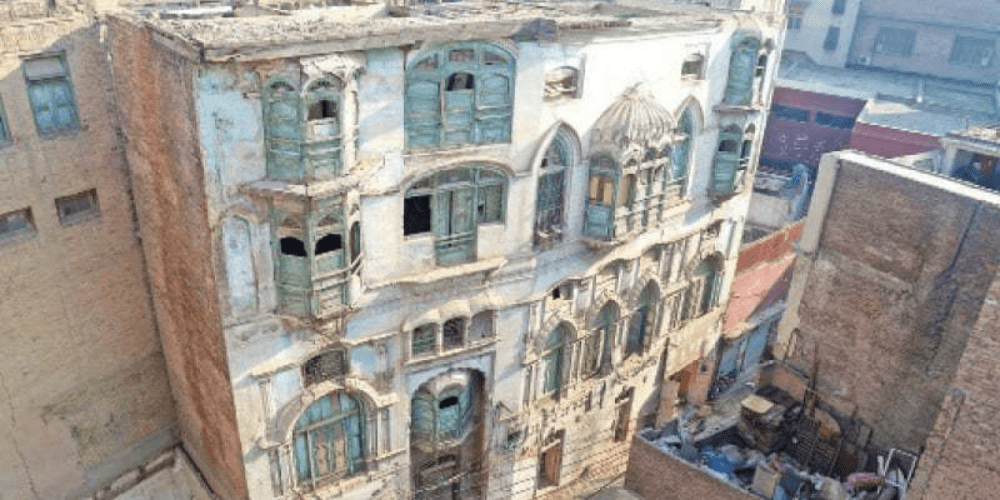In the ever-evolving world of architecture, one building can stand as a testament to the international influence and trends shaping how we design and construct structures. The Kapoor Building in Peshawar, Pakistan, is a striking example of this phenomenon. Renowned real estate photographer and architectural enthusiast Alex Kleyner, who serves as the CEO and President of Alex Kleyner Photography & Design, provides a unique perspective on how the Kapoor Building showcases global architectural influences. This involves two cities he loves, New York and Miami in the United States, and how they influenced a residential building/museum in Pakistan.
The Global Architectural Landscape
Architecture is a reflection of culture, technology, and aesthetics. Due to this, it’s constantly evolving. While architecture is deeply rooted in local traditions and materials, it’s also heavily influenced by global trends.
Architectural relief is a concept found in the physical structures themselves, the emotions they evoke, and the connections they establish.
New York and Miami: A Tale of Two Cities
New York City, a global hub of commerce, culture, and innovation, has long been at the forefront of architectural trends. The city’s towering skyscrapers, iconic landmarks, and diverse neighborhoods have collectively shaped the architectural landscape.
Meanwhile, down south in Miami, there’s a unique blend of modern design in a tropical environment. It acts as another influential player in global architectural trends. The city’s architectural landscape seamlessly merges contemporary elements with the natural surroundings.
Kapoor Building: A Fusion of Influences
Located in Peshawar, Pakistan, the Kapoor Building reflects international architectural influences. It seamlessly fuses elements from New York’s skyscrapers and Miami’s modernity, creating a unique structure that captures the essence of global architectural trends. It started as a 40-room residential building, but recently went through an updated transformation to become a museum. For someone who frequently shoots in both cities, Kleyner loves how the Kapoor Building held onto its past while modernizing.
New York’s Influence on The Kapoor Building
When examining the Kapoor Building, Kleyner sees three main influences from the Big Apple. Like many tall buildings worldwide, it’s hard to ignore what’s been accomplished in the United States’ biggest city.
- Vertical Relief: New York’s skyscrapers, particularly the Empire State Building and One World Trade Center, have a strong vertical presence. The Kapoor Building incorporates similar vertical relief (albeit on a smaller, residential-sized scale), evoking a sense of aspiration and progress.
- Art Deco Elements: The Art Deco movement, known for its geometric patterns and intricate designs, is prominent in New York’s architectural history. The Kapoor Building features Art Deco elements that connect it to the timeless elegance of New York’s iconic structures.
- Curtain Walls: Glass curtain walls, a hallmark of New York’s modern buildings, are used in the Kapoor Building now to promote sustainability and energy efficiency. This architectural trend reflects the need for eco-friendly design. Any newer construction can benefit from this.
Miami’s Influence on The Kapoor Building
The more modern look of Miami has made its way to Pakistan. Fusing New York and Miami’s architecture helps the Kapoor Building shine.
- Open Atriums: Miami is known for its relaxed, engaging spaces. The Kapoor Building incorporates open atriums, offering relief from the urban environment while encouraging social interaction.
- Rooftop Gardens: Both Miami and the Kapoor Building use rooftop gardens, providing a green escape above the urban landscape. These gardens promote sustainability and provide a respite for building occupants.
- Glass Facades: Miami’s contemporary architecture often utilizes glass facades. The Kapoor Building draws inspiration from this approach, enhancing the structure’s energy efficiency and visual appeal.
Keeping Peshawar Unique
While the Kapoor Building borrows elements from New York and Miami, it also maintains its unique identity rooted in Peshawar’s rich cultural heritage. The building’s design shows Peshawar’s vibrant history and modern aspirations.
It gets its name from a show business family. They wanted a residential building that stood out, and the Kapoor family owned it for a few decades. After being auctioned off and bouncing around with ownership, IMGC Global Entertainment has invested and turned it into a museum.
Peshawar isn’t pretending to be a city in the United States with the Kapoor Building. Instead, it uses what works elsewhere and what can become applicable to its region of the world.
Architectural Language: A Global Connection
The architectural language transcends borders and unites cities worldwide. It’s a visual form of communication, reflecting a city’s values, dreams, and identity. Alex Kleyner says, “Architectural relief is a dynamic language that cities use to express themselves and connect with the rest of the world.”
A Glimpse into Peshawar’s Future
As Peshawar continues to grow and develop, structures like the Kapoor Building symbolize the city’s upward trajectory. Peshawar is a city that balances tradition and innovation, and its architecture reflects this duality. Kleyner notes, “Peshawar is experiencing a renaissance in architecture, embracing modernity while celebrating its rich history. The Kapoor Building is a symbol of the city’s ambitions and aspirations. It shows what the city can do as it continues to grow.”
The Kapoor Building’s Global Legacy
The Kapoor Building in Peshawar, Pakistan, is a shining example of how architectural trends transcend borders, connecting cities worldwide. It serves as a reminder that the language of architecture is universal, expressing the values and aspirations of a city’s residents and celebrating both local traditions and global influences.
As the CEO and President of Alex Kleyner Photography & Design, Alex Kleyner emphasizes the importance of understanding the architectural language that ties cities together. Kleyner says, “The Kapoor Building is a testament to the global conversation that shapes architectural trends. It reflects the ever-evolving nature of architecture and how it connects us all, creating structures that leave a lasting impact on our cities and lives.”
Photographers don’t flock to the city quite like they do to New York City and Miami, but The Kapoor Building establishes a standard for future buildings to live up to. As time passes, it can bring in photographers from around the world.





























